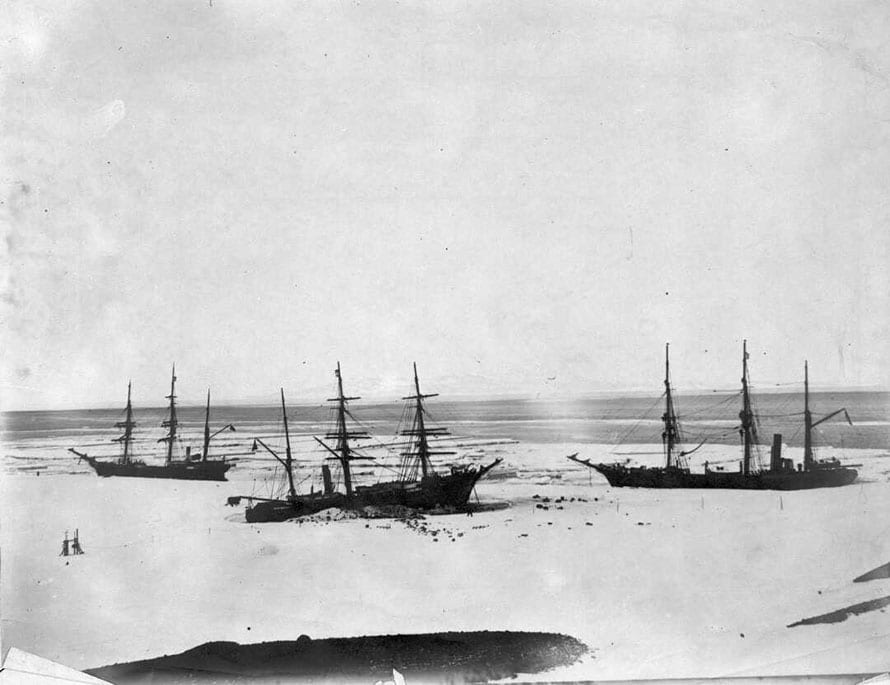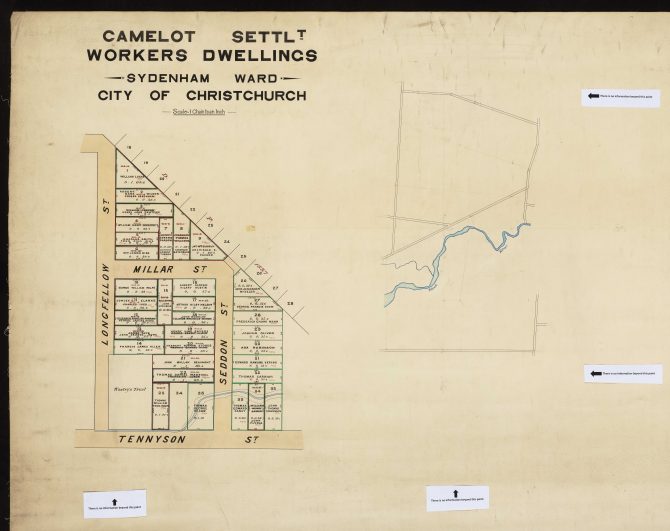Included in the Church Registers at Christchurch City Libraries is the 1905 baptism of Hazel Morning Rolfe, opens a new window. Little Hazel died aged only 8 months but her middle name Morning signified an important event in the lives of her parents George and Margaret Rolfe.
George Rolfe and the Antarctic
George, a sailmaker, served on the SY Morning,, opens a new window one of the polar relief vessels sent to re-supply Robert Falcon Scott's ship Discovery in 1902-03, and again in 1903-04.
Born in London, the intrepid George voyaged twice to the Antarctic with Morning. Previously named Morgen, the Norwegian whaling ship was refitted in England before sailing to New Zealand. She departed from Lyttelton for the Antarctic on 6 December 1902.
Morning reached the icebound Discovery at the end of January. She transferred stores, then with some of Discovery's crew on board including Shackleton, left for the dangerous return voyage to New Zealand, opens a new window. The return of the "stout little vessel" was greeted with three hearty cheers! Discovery, locked in ice, was left to winter over.
Later in 1903, Morning accompanied by Terra Nova set sail for McMurdo Bay, this time equipped with dynamite to blast the ice that trapped Discovery. They were sighted by Discovery on 5 January 1904. The relief teams worked with the Discovery crew to free the trapped ship and by 15 February Discovery was finally clear of the ice, opens a new window. A few days later all three ships had started the return trip to Lyttelton, arriving back at the beginning of April 1904.
Settling in Christchurch
George Rolfe stayed in New Zealand and in May 1904 married Margaret Craig. After Hazel's death in infancy, the couple went on to have two further daughters, Hilda and Myrtle.
The family settled at 32 Longfellow Street, Sydenham (now Beckenham). Longfellow Street was part of that suburb's Camelot Settlement, a planned housing development for workers. Previous proto-state housing had been constructed at Tennyson Street, and both Millar and Seddon Streets were also developed as part of the Camelot site. This naming hodgepodge of politicians and poets, has a special place in Christchurch housing history.
George continued as a sailmaker. He also shared his stories of Antarctic adventure with A. C. J. Cuddy, a local artist who created a massive oil painting, opens a new window depicting the polar relief vessels Morning and Terra Nova approaching the Discovery. Shown at the Industrial Exhibition, opens a new window in 1911, the painting eventually ended up in the Canterbury Museum.
Marital Hiccups in Camelot
George and Margaret Rolfe experienced some marital woes. The first clue of this was the posting of debtor responsibility notices in the newspaper., opens a new window
In 1918 Margaret Rolfe applied for a separation order, opens a new window from George on the grounds of habitual drunkenness and persistent cruelty. The court refused the separation order but ordered George to continue maintenance payments of 30 shillings per week. , opens a new window
George and Margaret must have worked out their difficulties and were residing together at Longfellow Street in 1927 when they celebrated Hilda's 21st with a small party, opens a new window.
A watery end
Just a couple of years later, in 1929, George was found dead in the river Avon just west of the Madras Street Bridge.
He'd set out for work at the Addington Railway Workshop at 6.55am and seemed in normal health. Margaret said George had recently experienced some giddiness but hadn't gone to see a doctor. A post-mortem examination found he had died of asphyxiation due to drowning. It also noted a strong smell of alcohol in the stomach and bowel, and significant thickening of the arteries. Any giddy turns might have related to high blood pressure.
More information
- More posts about Antarctic expeditions
- More local history resources
- Local and family history events
- View more Picturing Canterbury posts






Add a comment to: Meet the locals – George William Rolfe, sailmaker and Antarctic voyager